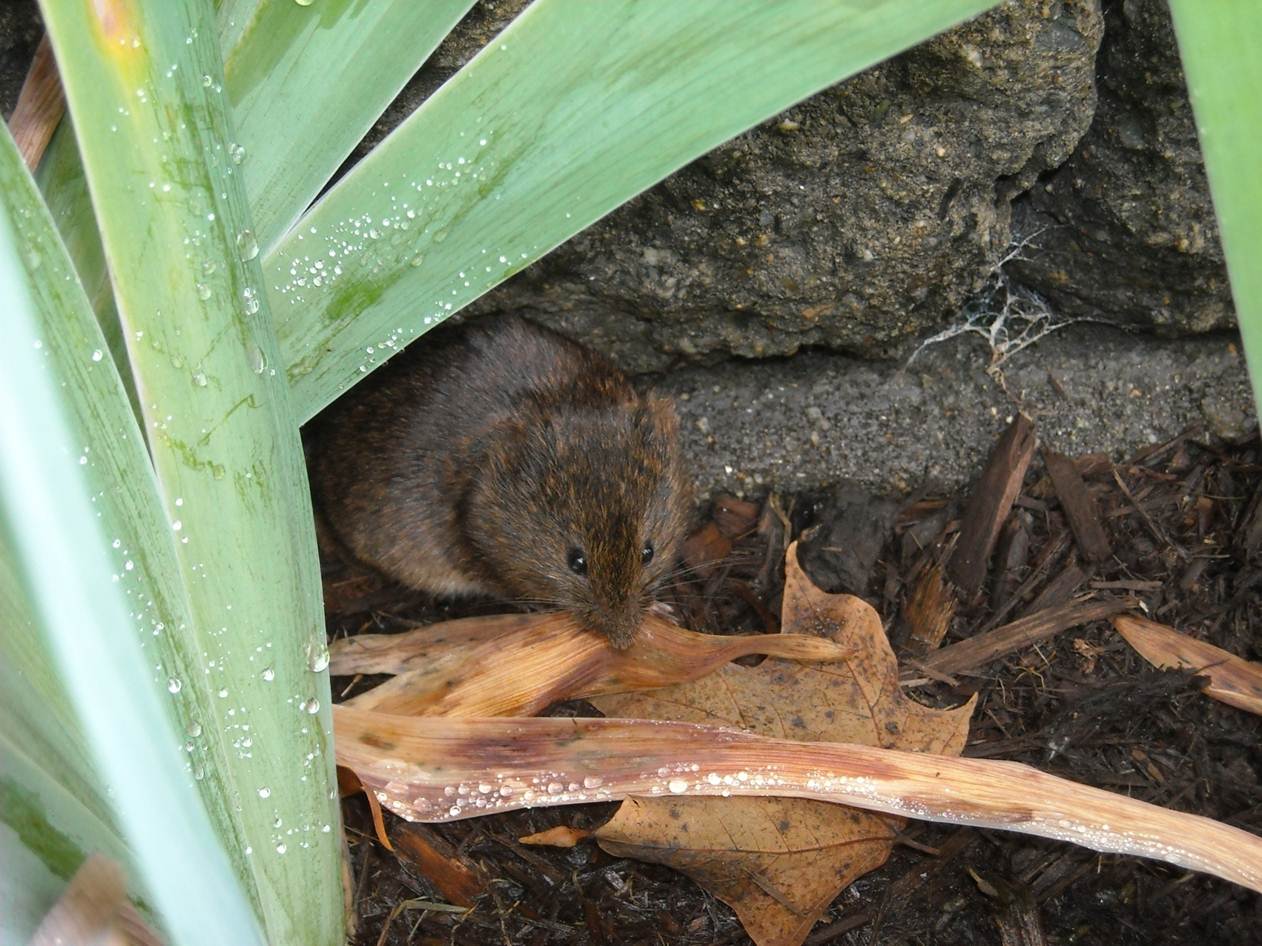
I’ve always rather liked most rodents. There’s a shy rabbit that we see in the back yard at times and sometimes I find a white-footed mouse or two in the garden shed or in a birdhouse. As both a child and a mom, I was charged with taking care of several guinea pigs and found them to be quite affectionate and affable pets. They did eat a lot though! But not as much as the voles in my yard do – or so it seems!
Damage by voles seems to run in cycles. Last winter’s snows kept them safe from predators and I had a fair amount of vole damage in my garden beds. Mostly they ate the hostas and crocus bulbs, a few sedums and a balloon flower. They also undermined a Korean holly, which died a slow death as I did not notice the tunnels underneath it until it was too late. On top of that, my crocosmia finally produced a single brilliant orange flower cluster this year and I noticed a few days after it began blooming that it looked wilted. Of course, it pulled right out of the ground as the bulb it was attached to was now gone – part of someone’s 4 course dinner I assume!
So what do we know about these varmints? Most likely they are meadow voles, although there are a few other species of voles in Connecticut. These eating machines range from 3 ½ to 5 inches and believe it or not, only weigh a couple of ounces. Meadow voles are much more stockier than a mouse and have a somewhat shaggy grey to brown fur. They also have relatively short tails and almost hidden ears. Meadow voles are found throughout the northern third or so of the United States and forage even in Canadian territories. They tend to be active year-round both during the day and at night – would we all be so lucky to have this much energy!
And what do they eat? Aside from the roots of many plants, meadow voles apparently enjoy grass and clover, the shoots, stems, tubers and even flowers of many plants and of course the bark of trees and shrubs, especially fruit trees. When they feed on the bark of fruit trees or other woodies, they can easily be the demise of the plant. Under the visible bark of the tree lies the xylem which carries water from the roots to the upper parts of the tree and the phloem which carries carbohydrates and sugars created in the leaves through photosynthesis to the roots and other plant parts. When voles feed on this inner ‘bark’ they basically cut off the circulation of water and food in the plant and it will die.
Meadow voles can construct an elaborate tunnel system with both surface runways and underground burrows and they may even use mole tunnels. They may nest in underground chambers or in warmer months on the ground’s surface under a vegetative cover.
Unfortunately for us New England gardeners, it is said that the meadow vole is believed to have the highest reproductive rate of any mammal Female voles can begin to breed at the age of about one month and can have between 5 to 12 litters every year with 3 to 10 pups born in each litter. One captive vole actually produced 17 litters over the course of a year. So each pair of voles could potentially add somewhere around 15 to 120 more voles to your yard every year – and probably even more if all of their young live and reproduce.
Luckily for us, voles are a delicacy to just about all native carnivores which explains their high reproduction rates. Owls, hawks, snakes, foxes, bobcats and other native species could keep the vole population within bounds if we could provide for their needs. With the fragmentation and elimination of their habitat, however, vole populations can build up to the point where we gardeners find them incompatible with our desires.
Personally, I am not an advocate of poisons or physical control options. You can call the UConn Home & Garden Education Center (877) 486-6271 to discuss these topics. I have chosen to plant bulbs like snowdrops, hyacinths and daffodils and a wide variety of flowers and shrubs to try to find plants that voles are not particularly fond of. I had placed quarter-inch wire mesh collars around the 2 apple trees in our yard when they were young. Since I really wanted a tulip-lined front walkway, I tried adding a Volebloc barrier http://www.permatill.com/home-garden-products.php?cat=10 to the two narrow beds. The tulip bulbs survived the winter and were coming up nicely with large fat flower buds – until the deer ate them! Sometimes, you just can’t win!
Submitted by Dawn Pettinelli for UConn Extension